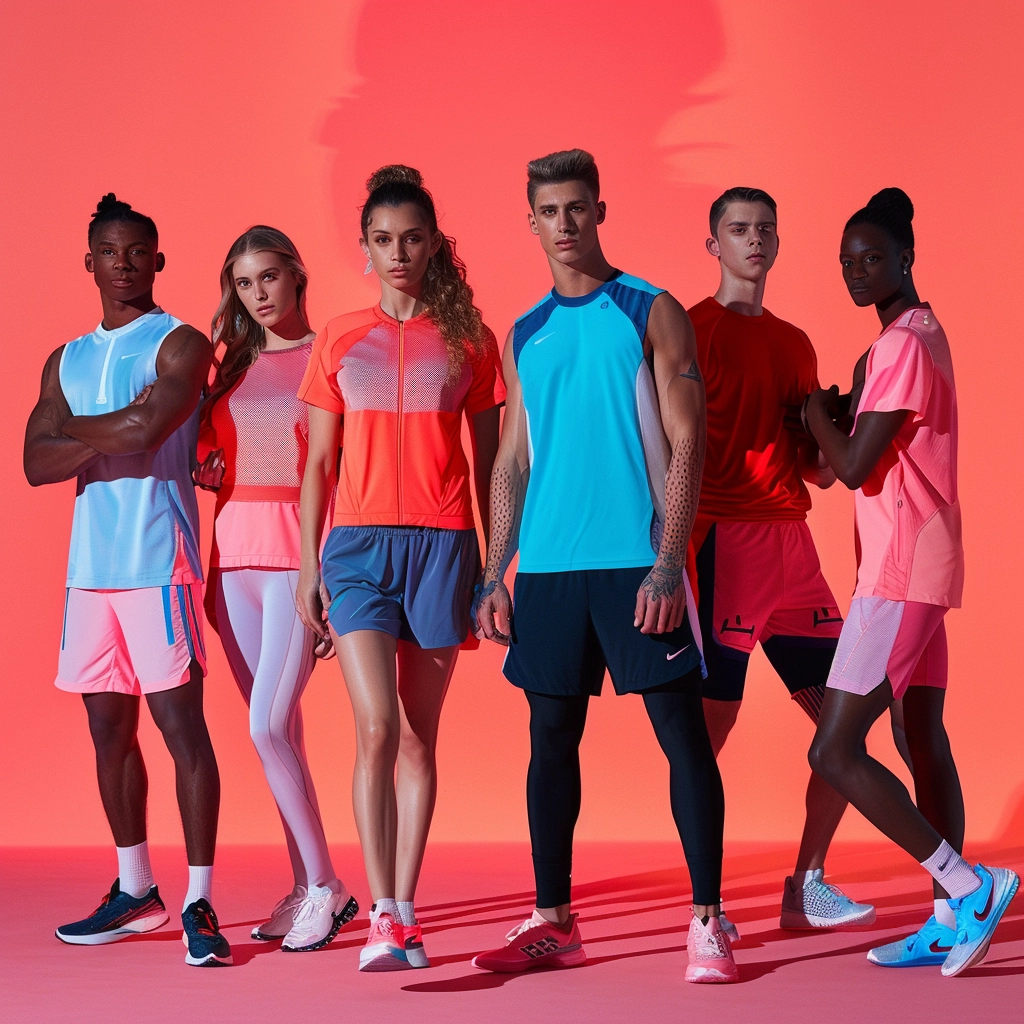Running shoes transcend mere athletic gear, serving as an indispensable ally for every runner. From ambitious marathoners to leisurely joggers, the quest for the ideal pair of trainers is critical. This guide illuminates the complexities of running shoes, showcasing innovations from Nike, ASICS, and Horka while providing expert advice on selection and care to maximize their lifespan.
Introduction to Running Shoes
Understanding the pivotal role of shoes is the first step toward selecting the perfect pair. Engineered for support, comfort, and foot protection during running—a high-impact exercise—running shoes have undergone significant advancements, adopting cutting-edge technologies and materials to boost performance and avert injuries.
The Science Behind Running Shoes
The craft of running shoe design is an intricate blend of biomechanics, material science, and ergonomics, aimed at complementing the runner’s foot structure, gait, and terrain. This section explores how contemporary running shoes reduce impact forces, encourage natural foot motion, and enhance running efficiency.
Nike Running Shoes
Nike’s trailblazing journey in running shoe innovation is marked by seminal technology and iconic models, from the Air Zoom to the latest React foam. Discover the narrative of Nike’s triumph and delve into some of their flagship running shoes:
-
- Nike Air Zoom Pegasus: Renowned for its durability and exceptional cushioning, suitable for everyday runs.
-
- Nike React Infinity Run: Designed to minimize injury risk and provide a smooth, stable ride, perfect for long-distance runners.
-
- Nike Free RN 5.0: Offers a barefoot-like feel, promoting natural foot movement for those preferring a minimalist approach.
ASICS Running Shoes
ASICS’s dedication to boosting runner performance through rigorous research and innovation shines through in its GEL technology and FlyteFoam, ensuring superb shock absorption and bounce. Featured ASICS include:
-
- ASICS Gel-Kayano: A staple for stability, ideal for overpronators seeking support and comfort.
-
- ASICS Gel-Nimbus: Provides plush cushioning and a responsive stride, catering to neutral runners.
-
- ASICS GT-2000: Offers a balance of support and comfort, tailored for runners with mild to moderate overpronation
Horka Running Shoes
Though less known than Nike or ASICS, Horka’s shoes stand out for their quality and performance. Prioritizing stability and cushioning, Horka’s offerings cater to those in search of dependable, comfortable running footwear. Key models and their unique attributes remain to be explored, as Horka continues to carve its niche in the running shoe market.
How Long Do Running Shoes Last?
Experts recommend replacing shoes every 300-500 miles, but signs of wear and the necessity for timely replacement to prevent injuries are vital considerations. Learn to recognize when it’s time for a new pair.
Selecting the Right Running Shoes for Your Needs
Choosing running shoes is highly individualized, factoring in foot shape, terrain, and personal preferences. Gain insights on selecting a pair that delivers optimal fit, support, and performance for your running endeavors.
Understanding Foot Shape and Gait
-
- Foot Arch Type: Your foot’s arch type (flat, neutral, or high arch) significantly influences your choice. Specialized shoes are designed to accommodate each arch type, providing the necessary support and stability.
-
- Gait Analysis: Understanding how your foot moves when you run, including overpronation, or neutral gait, is crucial. Many running stores offer gait analysis to recommend shoes that address your specific motion mechanics.
Considering the Terrain
-
- Road Running: If you primarily run on paved paths and sidewalks, look for shoes with ample cushioning to absorb the hard impact and provide a smooth ride.
-
- Trail Running: Trail shoes offer increased traction, support, and protection against rough, uneven surfaces found in off-road settings.
-
- Mixed Terrain: For runners who tackle both road and trail, versatile shoes that offer a balance between cushioning and grip are ideal.
Personal Preferences and Features
-
- Cushioning Level: Some runners prefer a plush, soft feel underfoot, while others opt for minimal cushioning to maintain a closer ground feel.
-
- Drop: The heel-to-toe drop affects how your foot strikes the ground. A lower drop (0-6 mm) promotes a more natural forefoot or midfoot strike, whereas a higher drop (8-12 mm) is suited for heel strikers.
-
- Weight: Lighter shoes may enhance speed and agility, while heavier models might offer more support and durability.
-
- Breathability: Consider the shoe’s material, especially if you run in hot weather, to ensure adequate air circulation and moisture management.
Trying and Testing
-
- Fit and Comfort: Ensure a snug fit without tightness, with about a thumb’s width of space in the toe box. The shoes should feel comfortable from the start, without a breaking-in period.
-
- Test Run: Many stores allow you to take a short run indoors or on a treadmill. Take advantage of this to gauge the shoe’s comfort, support, and responsiveness.
Maintenance and Replacement
Remember, even the perfect pair of trainers won’t last forever. Pay attention to signs of wear and be prepared to replace your shoes approximately every 300-500 miles to maintain optimal performance and injury prevention.
By considering these factors and taking the time to test and evaluate potential shoes properly, you’ll be well-equipped to select a pair that supports your running goals and keeps you moving comfortably and efficiently on your preferred terrain.
Caring for Your Running Shoes
Caring for your running shoes not only extends their lifespan but also maintains their performance and comfort. Here’s a concise guide on how to take care of your running shoes, focusing on cleaning, maintenance, and storage:
Cleaning
-
- Remove Dirt: After each run, tap your shoes together to remove loose dirt. Use a soft brush (an old toothbrush works well) to scrub away caked-on mud.
-
- Wash Gently: Remove the insoles and wash them separately for a deeper clean. Clean the shoes with mild soap and a soft brush or cloth in lukewarm water. Avoid immersing them entirely in water or using harsh detergents.
-
- Dry Properly: Never put your shoes in the dryer. Instead, stuff them with newspaper or a towel to absorb moisture and maintain their shape. Allow them to air dry away from direct heat or sunlight.
Maintenance
-
- Rotate Shoes: If possible, rotate between two pairs of shoes to give them time to air out and recover between runs.
-
- Inspect Regularly: Regularly check for signs of wear, particularly in the outsole and midsole. Early detection of wear can prevent injuries and indicate when it’s time for a new pair.
Storage
-
- Keep Them Dry: Store your running shoes in a dry, well-ventilated area. Moisture can lead to the breakdown of shoe materials and the development of odors.
-
- Avoid Extreme Temperatures: Don’t leave shoes in direct sunlight, a hot car, or a cold garage. Extreme temperatures can damage the materials and reduce the shoes’ lifespan.
By adhering to these simple care instructions, you can maximize the durability and performance of your shoes, ensuring they’re always ready for your next run.
Conclusion
Choosing the right running shoes is a crucial step toward a fulfilling running experience. Brands like Nike, ASICS, and Horka offer a variety of options to cater to different needs and preferences. By selecting, maintaining, and timely replacing your shoes, you can enjoy the benefits of improved performance and injury prevention. Embrace the journey to finding your perfect pair and experience the transformative power of the right shoes on your runs.
FAQs
Running shoes should generally be replaced every 300-500 miles, but this can vary based on your running style, weight, and the shoe’s durability.
Absolutely. The right running shoes can improve your running efficiency, reduce injury risk, and enhance comfort, all of which contribute to better performance.
Consider your foot arch type and gait when selecting running shoes. Shoes designed for your specific foot mechanics can provide the necessary support and stability.
Road running shoes are designed for pavement and feature cushioning for shock absorption. Trail running shoes offer enhanced grip and protection for off-road conditions.
Rotating between pairs allows shoes to recover from the compression of running and extends their lifespan.



